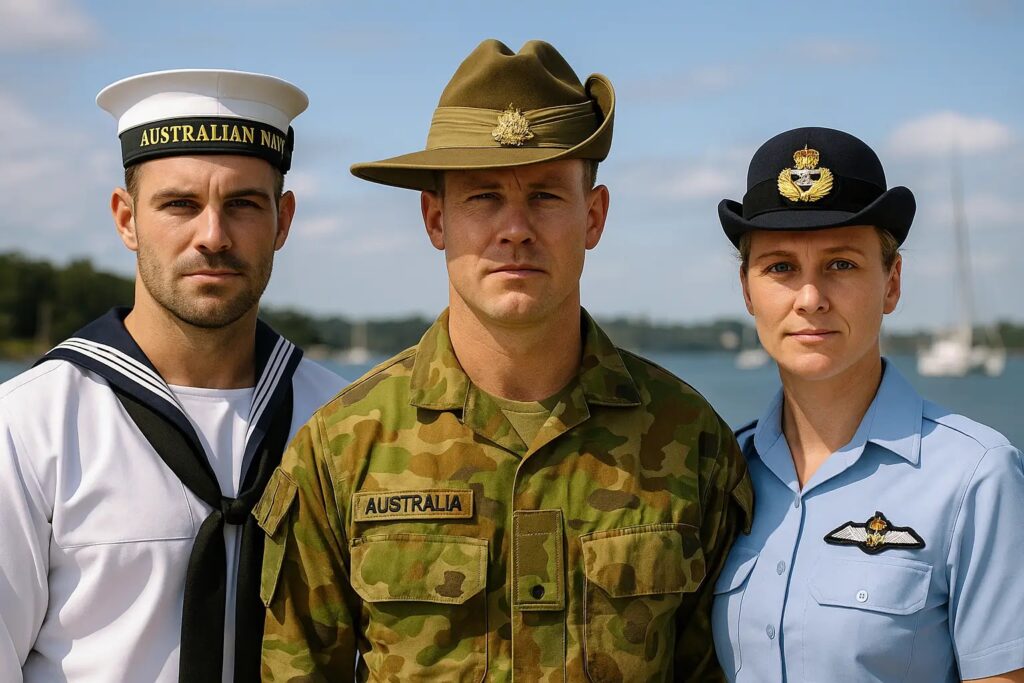Australia’s military—the Australian Defence Force (ADF)—is more than ships, jets, or uniforms. It’s a close-knit professional community bound by service to nation and community. In 2025, the ADF continues adapting to global threats, driving innovation, and supporting Australians during disaster and conflict.
Structure and Leadership
Unified Command
Formed in 1976 to combine separate services under one command, the ADF includes the Royal Australian Navy (RAN), Australian Army, and Royal Australian Air Force (RAAF) . It is overseen by the Chief of the Defence Force, currently Admiral David Johnston, operating from Canberra’s Russell Offices .
Civilian Oversight
The Governor-General is Australia’s ceremonial Commander-in-Chief, while elected officials—led by the Minister for Defence, Richard Marles—seek direction from Parliament .
Personnel and Resourcing
Size and Composition
The ADF totals nearly 90,000 members—57,226 active and 32,560 reservists as of June 2024 . While smaller than many regional militaries, it remains well-equipped and agile.
Opportunities and Inclusivity
Australia runs an all-volunteer force open to women and Indigenous Australians, aiming for diverse representation by 2025 (). Plans include opening recruitment to certain allied permanent residents, with pathways to citizenship after service .
Branches and Roles
Navy
The RAN maintains maritime security through major bases in Sydney and Perth. It’s modernizing with Collins-class upgrades and preparing for nuclear-powered SSN‑AUKUS submarines .
Army
Australia’s land forces combine three regular brigades, special operations, and reserve units. New equipment like HIMARS rockets and Bushmaster carriers are being introduced ().
Air Force
The RAAF fields cutting-edge assets—F‑35 fighters, E‑7 AWACS, P‑8 maritime patrol planes, and MQ‑28 Ghost Bat drones—supporting national defense and global operations .
Joint Capabilities
The Joint Capabilities Group integrates space, cyber, and logistics capabilities under Lt‑Gen Susan Coyle since 2017 , uniting these support functions across services.
Missions and Operations
Defence & Disaster Response
The ADF safeguards Australia’s borders, supports regional security, and often leads humanitarian relief during bushfires, floods, and overseas crises .
Regional and International Cooperation
Australia maintains strategic ties via ANZUS, AUKUS, Five Powers, and NATO partnerships (). Recent actions include deploying surveillance assets to Poland and sanctioning Russia .
Modernization and Strategic Planning
Defence Spending & Capability Development
The 2024–25 budget of A$55.7 billion accounts for 2.02% of GDP . Ongoing investments target AUKUS submarines, long-range missiles, drones, and base upgrades .
Preparing for Indo‑Pacific Tensions
Amid China’s growing influence, the 2020 Defence Strategic Update and 2023 Review emphasize urgent modernization—shortening warning periods and prioritizing readiness .
Challenges and the Road Ahead
Workforce and Culture
Recruitment lags, and workforce retention is challenged by workplace culture and external competition . Mandated retirement ages—60 for active, 65 for reservists—also strain senior retention .
Strategic Investment Pace
Critics note that planned funding, while significant, may lag in implementation. Voices including former ASIO chief Duncan Lewis and General Cosgrove urge faster action and stronger capabilities .
Conclusion
In 2025, the Australian Defence Force is a compact but capable force—advanced, integrated, and ready. Navigating strategic challenges with new technology, partnerships, and a commitment to diversity, the ADF stands as a resilient and forward-looking guardian of national and regional security.

